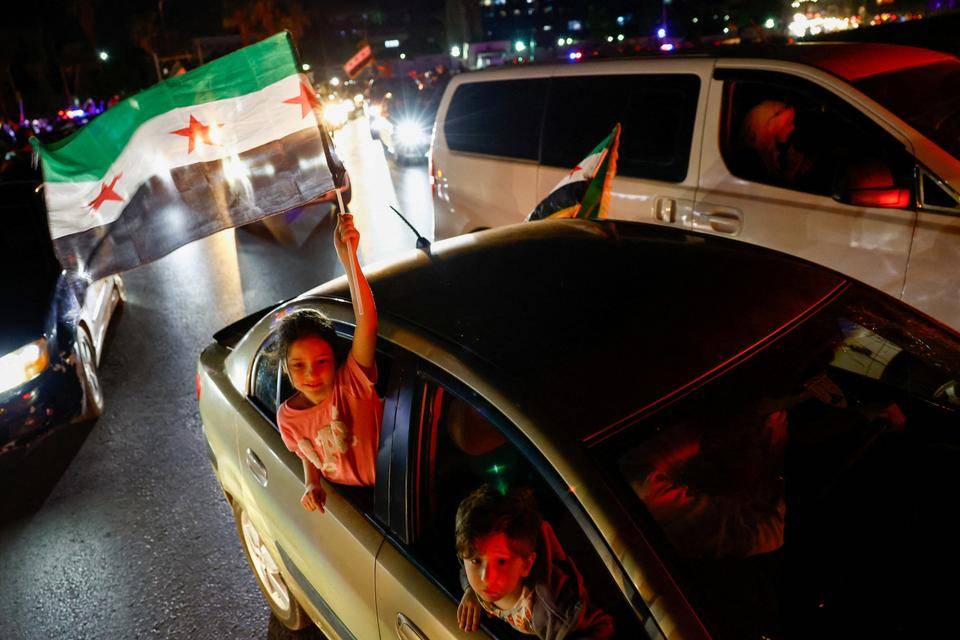Middle East Realignment: Trump Loosens Syria Sanctions, Israel Eyes Strategic Opening
On June 30, 2025, U.S. President Donald Trump signed a notable executive order formally disabling the bulk of America’s long-standing economic sanctions on Syria—sanctions that had restricted the country’s access to international finance and trade since the early 2000s. While targeted sanctions remain in place against former President Bashar al‑Assad, his inner circle, and designated terrorist organizations, the order effectively reverses decades-old financial isolation, setting the stage for Syria’s economic reintegration.
The decision comes after an earlier move in May, when Trump began rolling back certain restrictions, following pledges made during his visit to Saudi Arabia that he would give Syria “a chance at greatness.†In Riyadh, Trump held a high-profile meeting with Syria’s interim leader, Ahmed al‑Sharaa—a former Islamist commander who rose to power after Assad’s dramatic removal from office in December 2024. Al‑Sharaa, previously linked with al‑Nusra/HTS, has since taken steps to rebrand himself as a reformist and has run for official presidency, pledging to govern inclusively and tone down extremist ties.
Trump’s executive order rescinds the “national emergency†declaration imposed in 2004, which sanctioned critical Syrian state institutions including the central bank. The Treasury Department, led by Brad Smith, confirmed that the move would end Syria’s economic isolation, re-enable international commerce, and stimulate interest from Gulf states and U.S. firms.
Still in force are the Caesar Act restrictions, imposed by Congress to punish the Assad regime’s human rights abuses, chemical weapons, and war crimes—including drug trafficking networks—and linked to Syria’s military-industrial complexes. Similarly, sanctions against terrorist groups (ISIS, Iranian proxies, HTS affiliates) are retained, while al‑Sharaa and HTS terrorists redesignations are now under government review, with Marco Rubio directed to assess potential delistings.
Several key regional powers—Saudi Arabia, the UAE, Qatar, and Turkey—pressured Washington to support Syria’s threshold recovery and to pivot it away from Iranian influence. The new Syrian leadership, perceived as less Tehran-aligned, opens an opportunity for Gulf countries to foster reconstruction and gain influence.
Furthermore, Damascus’s fall in December led to a rapid recalibration: Iran lost a strategic foothold; Russia, while still present via coastal bases, saw its leverage diminished; and Syria, reforming under al‑Sharaa, now seeks regional reintegration.
Perhaps the most geopolitically significant aspect is Israel’s response. For decades, Syria and Israel were adversaries, engaging in multiple conflicts and disputes over territory like the Golan Heights, which Israel formally annexed in 1981 and the U.S. recognized in 2019.
Since Assad’s fall and al‑Sharaa’s move to limit Iranian influence, Israel has softened its stance somewhat. Foreign Minister Gideon Sa’ar publicly endorsed expanding the Abraham Accords to include Syria (and possibly Lebanon), in a bid to normalize relations while insisting Israel’s sovereignty over the Golan Heights remains intact.
Strategic calculations in Israel weigh the benefits of weakening Iran’s regional axis more heavily than building bridges with Syria; backchannels to Damascus have reportedly been in progress for months, with assistance from Qatar and Saudi intermediaries.
Yet Israeli skepticism remains considerable. Concerns focus on al‑Sharaa’s background and his movement’s treatment of minorities. Top Israeli security figures—like Major General Oded Basiuk and National Security Council head Tzachi Hanegbi—have sought reassurances, and remain wary of a unified Syria under HTS-backed leadership, pushing instead for a decentralized or Russian-monitored Syria.
The executive order instructs State Department officials to evaluate Syria’s status as both a state sponsor of terrorism and al‑Sharaa’s own designation. These bureaucratic reviews could take months––even longer since Congressional action would be required for full repeal of Caesar Act provisions.
In parallel, Secretary Rubio has held talks in Antalya with Syria’s Foreign Minister Asaad al-Shibani—who was sworn in December 2024—to define steps for economic engagement, internal reforms, counterterrorism cooperation, and a possible move toward regional normalization.
Domestically, al‑Sharaa confronts stiff challenges: moderating HTS influence, managing minority protections, reining in rival Assad loyalists, demilitarizing southern Syria to appease Israeli concerns, and implementing transitional governance, including Kurdish integration.
The European Union has already dismantled many of its Syrian sanctions, aligning with Gulf-led reintegration efforts. Meanwhile, Israel has conducted airstrikes within Syria to contain Iranian proxies—increasing pressure and signaling its determined vigil.
Saudi Arabia, Qatar, and the UAE have also taken financial initiatives, including plans to settle Syria’s World Bank debt—a crucial confidence signal.
Nonetheless, full normalization between Syria and Israel remains elusive. Apart from Golan Heights issues, Israel insists on de-escalation along its borders, effective counterterrorism, and guarantees that Syria will not host Iranian or extremist forces.
Trump’s executive order represents the most dramatic pivot in U.S.–Syria policy in over two decades. It breaks a long thread of punitive strategy and opens a potential pathway toward diplomatic normalization, economic rebuilding, and realignment of Middle East alliances—especially if Syria reorients firmly away from Iran and embraces regional integration.
For Syria, it means relief from crippling sanctions and the opportunity to rejoin the financial system. For Gulf nations, it offers a chance to reshape Syria’s trajectory. For Israel, it presents both an opportunity and a strategic test: can Damascus be trusted? Will al‑Sharaa really act as bulwark against threats to Israel? And can thorny issues like the Golan Heights, Palestinian reconciliation, and extremist control be resolved?
The next few months—through diplomatic signals, walked-back sanctions, security talks, and possibly initial symbolic steps toward joining the Abraham Accords—will determine whether this moment marks the start of a new Middle Eastern architecture or a temporary thaw grounded in political expedience.


